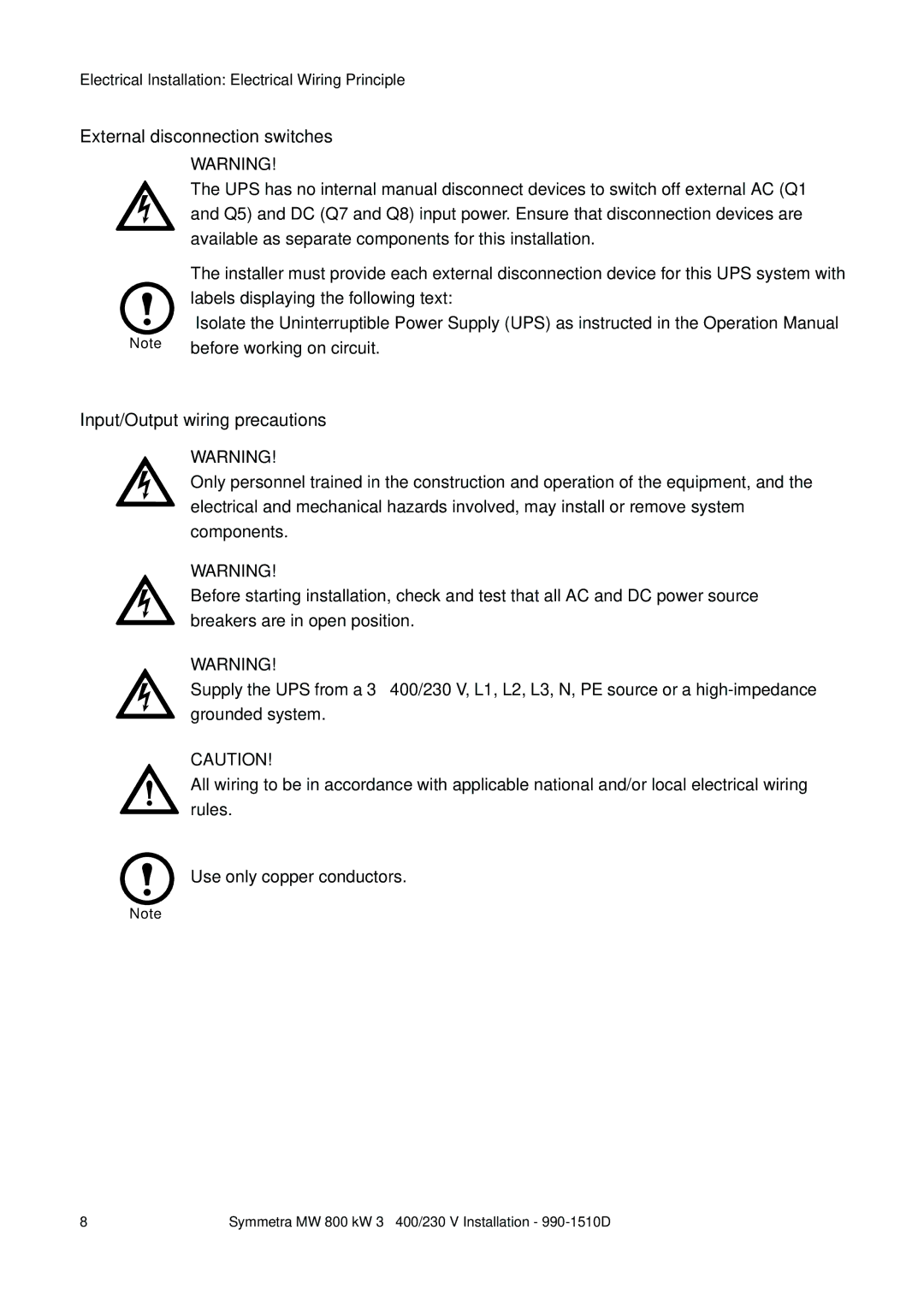SYMF800KH specifications
American Power Conversion (APC), a subsidiary of Schneider Electric, is renowned for its expertise in providing reliable power solutions. Among its extensive product lineup, the SYMF800KH stands out as a cutting-edge uninterruptible power supply (UPS) designed to meet the demands of enterprise data centers and critical applications. This model is particularly valued for its impressive performance, adaptability, and advanced technologies.One of the main features of the SYMF800KH is its capability to deliver an output power of 800 kVA, making it suitable for high-density loads. This UPS operates in a parallel configuration, allowing for scalability by connecting multiple units to provide increased capacity and redundancy. This adaptability ensures that organizations can grow their infrastructure without worrying about power limitations.
Another significant characteristic of the SYMF800KH is its high-efficiency operation that helps reduce energy costs and carbon footprint. With a near-unity power factor and up to 97% efficiency in double conversion mode, the SYMF800KH minimizes energy losses, benefiting both the environment and the organization's operational expenses.
The SYMF800KH is equipped with advanced technologies to ensure maximum reliability and performance. Its innovative SmartBoost and SmartTrim features enhance the UPS's ability to manage input voltage variations and optimize output voltage levels, safeguarding sensitive equipment from potential damage. The unit also boasts an intelligent battery management system, extending battery life and ensuring consistent performance during power outages.
Moreover, the SYMF800KH provides robust monitoring and management options. It is compatible with APC's software solutions, allowing users to monitor real-time data, receive alerts, and conduct remote management from a centralized interface. This feature is critical for maintaining operational reliability and ensuring timely response to any potential power issues.
In addition to its performance capabilities, the SYMF800KH is designed with ease of maintenance in mind. Its modular architecture allows for quick and straightforward replacement of components, minimizing downtime during service activities.
In conclusion, the American Power Conversion SYMF800KH is a high-performance UPS that brings together reliability, efficiency, and advanced technology, making it an ideal choice for organizations seeking to protect their critical infrastructure. By delivering scalable solutions with enhanced management features, the SYMF800KH stands as a top contender in the uninterruptible power supply market. As businesses continue to rely on technology for their daily operations, the importance of such robust power solutions cannot be overstated.

